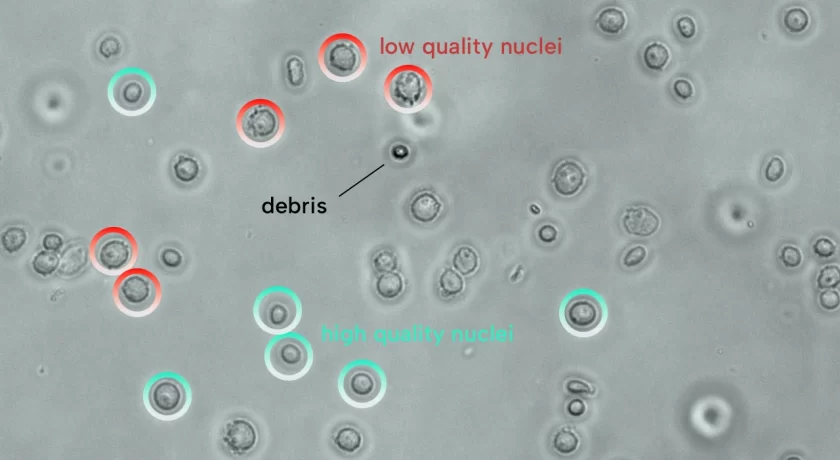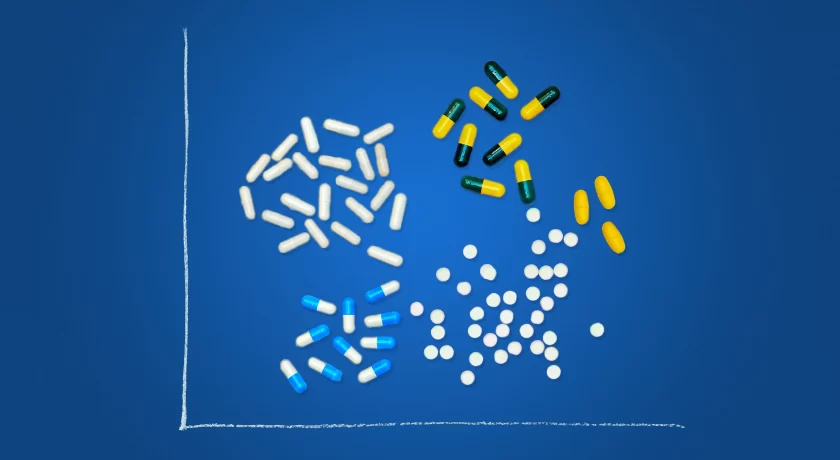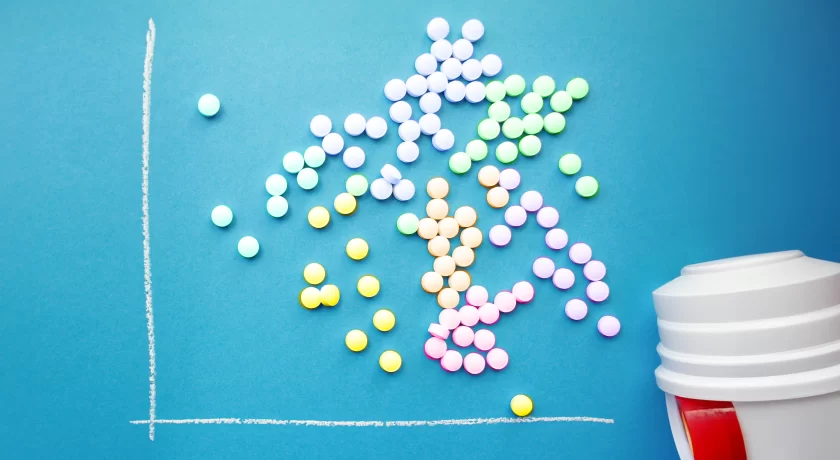
Nuclei isolation — To produce high-quality data with single nucleus RNA sequencing, it’s important first to find the most fitting nuclei isolation protocol. To be more precise, it’s important to find a protocol compatible with your tissue, with the right level of scalability for your project(s), that reaches the desired yield at high quality and reproducibility.
In a previous blog, we presented an extensive analysis of the general pros and cons of single nucleus sequencing. We also discussed for which situations isolating nuclei is favored over working with whole cells, depending, among other things, on tissue type, sample type, and biological question.
In this blog post, we explain some of the most common nuclei isolation methods and their upsides, downsides, and limitations. You can always contact us with a specific question or if you want to discuss your situation with experts.
Jump to a section:
Three categories
Broadly speaking, there are three categories of single nuclei isolation techniques: kits, machines for automated or semi-automated nuclei isolation, and customized manual protocols. Let’s go over these categories one by one and discuss their pros, cons, and limitations.
Nuclei isolation kits
How it works
Nuclei isolation kits typically provide a set of reagents and protocols for isolating nuclei from tissues. The process usually involves cell lysis, removal of cellular debris, and further nuclei purification. A popular kit is the Chromium Nuclei Isolation Kit by 10x Genomics.
Upsides
- Convenience: kits provide standardized protocols and reagents, making the process more accessible and reproducible to researchers.
- The Chromium Nuclei Isolation Kit by 10x Genomics is verified for many different tissues (see
- Time-saving: kits are usually less time-consuming compared to manual protocols, but more time-consuming than automated protocols.
Downsides
- Cost: commercial kits can be expensive.
- Limited customization: less flexibility in modifying the protocol to suit specific sample types or research goals.
- Variability: the efficiency of kit-based protocols can depend on the quality of starting material, which may vary.
Limitations
- Compatibility: kits are often tested on the most common tissues of the most common model organisms, specifically human and mouse. For clients with less common applications, commercially available kits may offer no prior results and information. For such tissues, a manual protocol is usually necessary.
- Yield: kits may not provide as high a yield as manual methods.
Tissues tested with Chromium Nuclei Isolation Kit

Automated or Semi-Automated Nuclei Isolation Machines
How it works
Specialized machines can automate the nuclei isolation process using mechanical methods (e.g., mechanical shearing), chemical methods (e.g., enzymes) which are sometimes partly manual, or a combination of the two. For example, both the Singulator and the Miltenyi GentleMACS Octo combine chemical nuclei isolation with (automated) mechanical shearing.
Upsides
- Efficiency: Automation can provide consistent results with minimal hands-on time.
- Reduced operator variability: Automation reduces the chances of human error.
- Scalability: Suitable for high-throughput applications.
Downsides
- Big first investment: Machines can be expensive to purchase and maintain.
- Learning curve: Operators need to be trained to use the equipment effectively.
- Sample type limitations: Some machines may not work well with certain sample types.
Limitations
- Compatibility: The choice of machines for single nuclei isolation is still relatively limited, and not all machines may be compatible with your specific research requirements.
- Equipment availability: Access to these machines may not be readily available in all research facilities.
Customized Manual Protocols
How it works
Researchers can develop their own protocols for nuclei isolation based on their specific needs. This usually involves optimizing cell lysis, centrifugation steps, and purification methods.
Upsides
- Flexibility: Customization allows tailoring the protocol to unique sample types or research goals.
- No kit dependency: Independence from commercial kits can be advantageous in some situations where you need complete knowledge and control.
Downsides:
- Time-consuming: Developing and optimizing a manual protocol can be time-intensive.
- Variability: Results may vary more depending on operator skill and protocol adjustments.
- Reproducibility: Can be challenging to achieve consistent results across different experiments.
Limitations:
- Expertise required: you need a deep understanding of the biology and technical aspects of nuclei isolation, technical skill, and experience.
- Resource-intensive: May require access to specialized equipment and reagents.
Choosing a method for nuclei isolation
The choice of nuclei isolation method depends on your specific research needs, tissue type, and sample type. Kits and automated machines offer efficiency and scalability, while customized manual protocols provide flexibility for tailored experiments.
Find out more
Find out more information on single nucleus isolation, our other 10x Genomics services, inspiring resources, and much more in our information guide:



